Clubhouses, Sun Shelter
and Forts
Add more detail about this feature, such as benefits or value
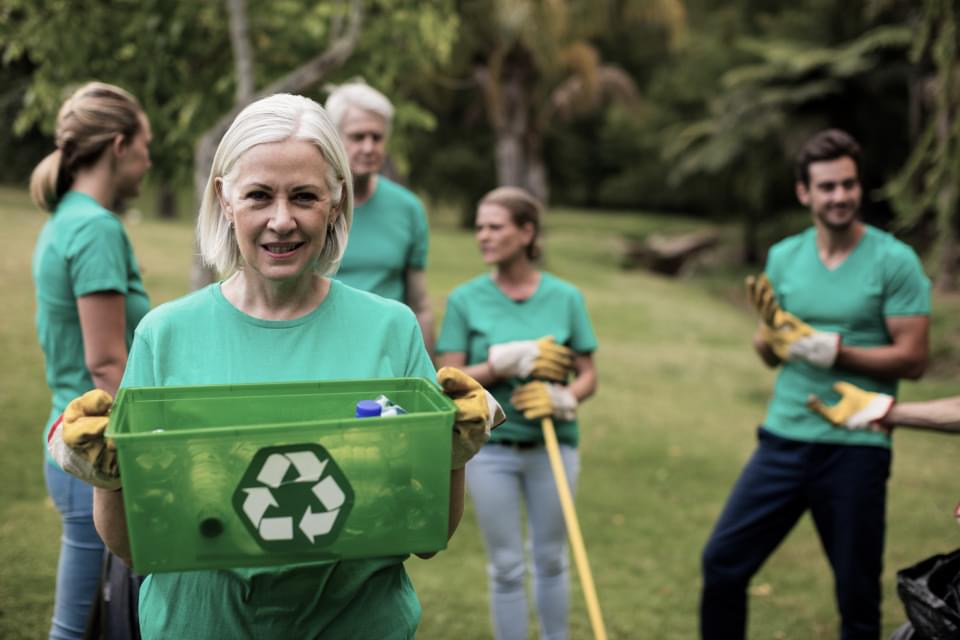
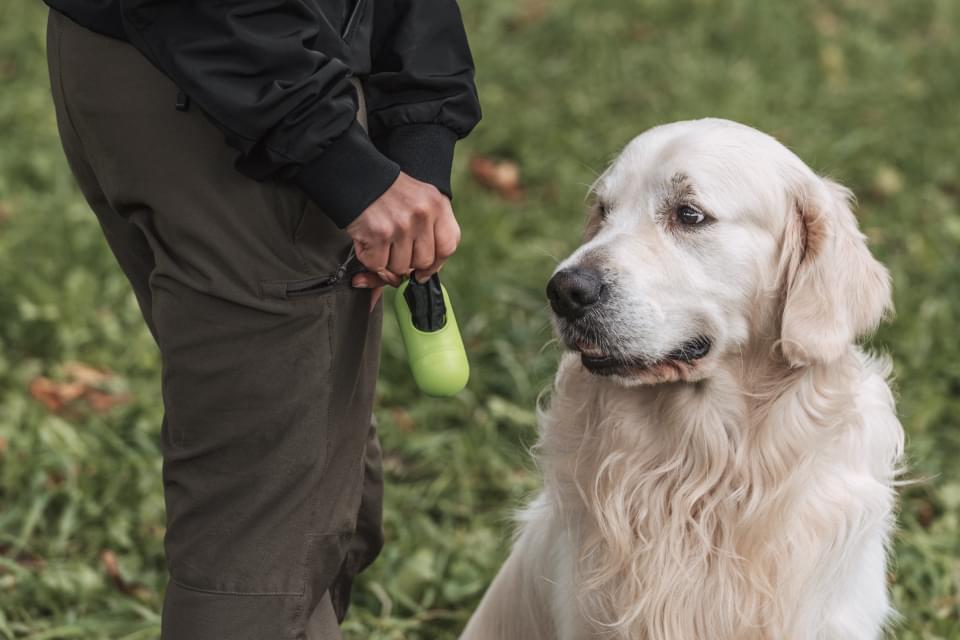
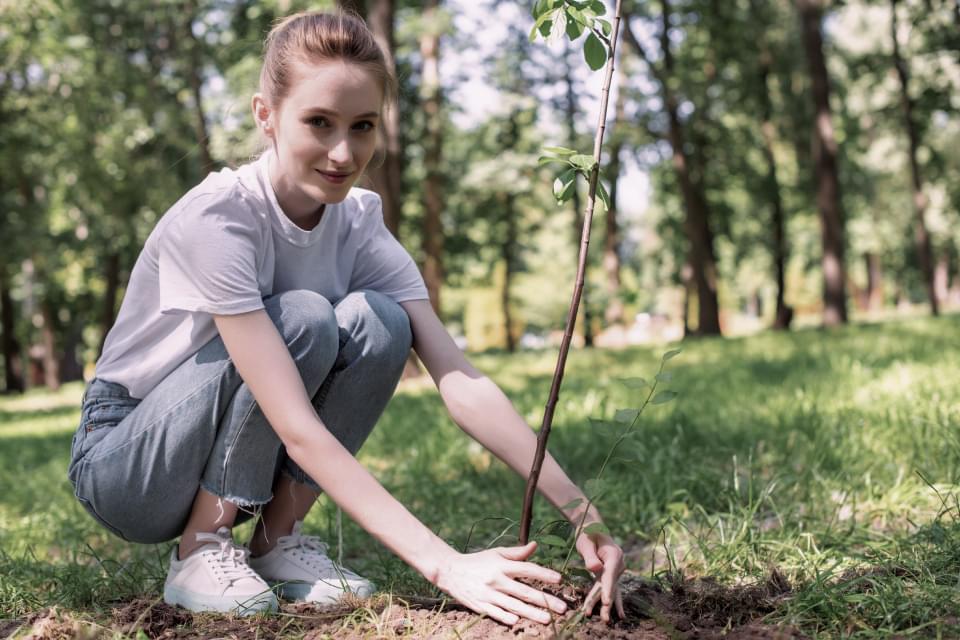
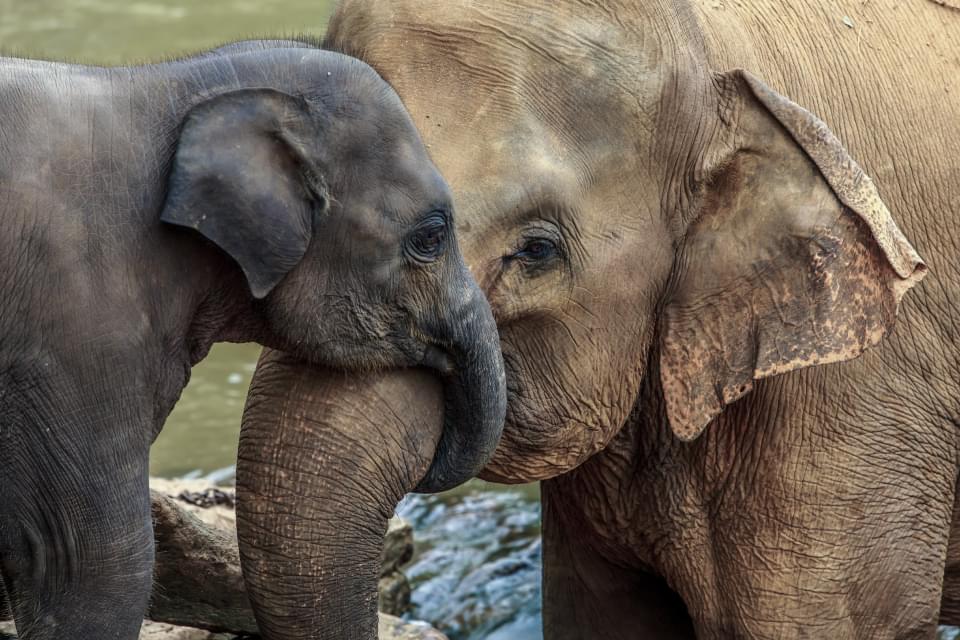
Like the name would suggest, playspaces are for all things clever, silly, quirky, and fun for all ages.
From the whimsical forms of Hope Marie to the creatively deceptive simple activities of fitness, recreation, and discovery that endlessly run through my brain: we want to inspire great playspaces that "toy" with the mind and unlock mental and physical muscles many of us have not stretched since childhood. Exhibiting nature this way will: artists also show us the power of play in revealing systemic injustices, subverting gender expectations, and confronting the absurdity of our political and ecological realities.
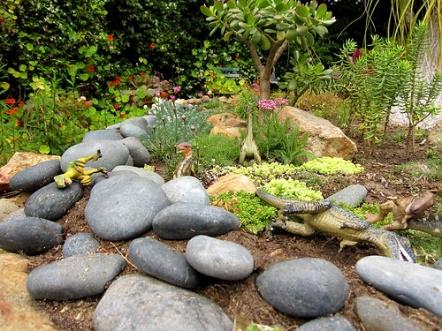
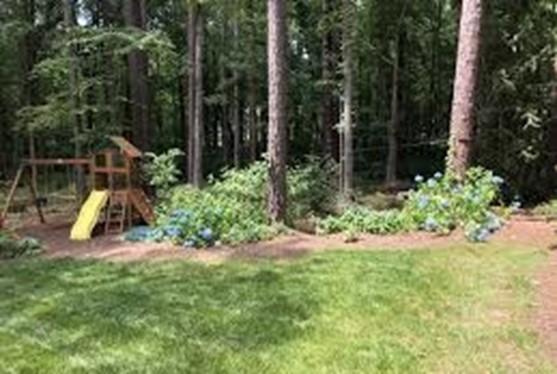
1. Pick a spot that looks inviting and versatile
for play options.
Something that shouts, ‘explore me’! Think of your child’s interests, heroes, influences, things they love, etc. They should influence your vision and choices along the way. But you also want it to remain safe to the wildlife as well. Watch them use and play in the space the way it is naturally, so you don’t alter or move something that they enjoy.
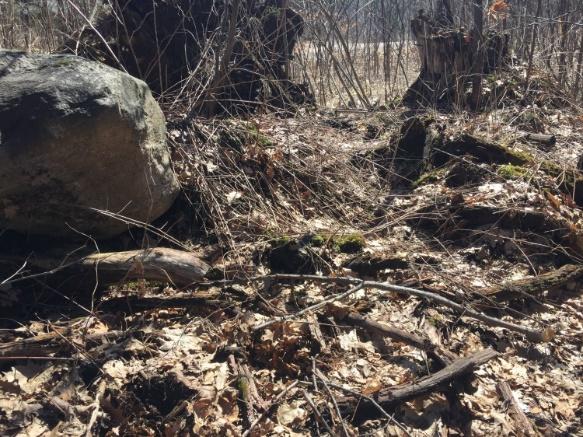
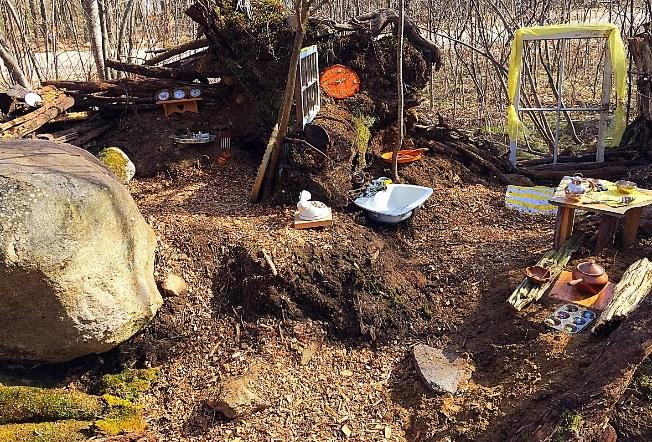
2. Clear the space as needed.
Removing tripping hazards, prickly thorn bushes and sharp rocks will help to encourage play and keep everyone safe. Be aware of who may already live in that space. For example, If there was an active birds nest, I wouldn’t touch this space.
3. Invite your expert explorers to check out the area.
Watch them investigate the area. What are they drawn to? How do they use the space?
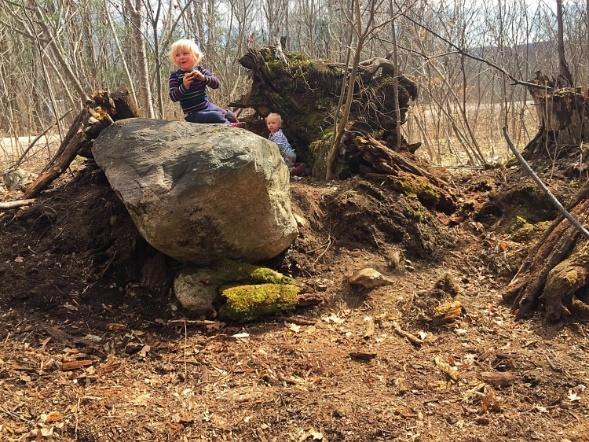
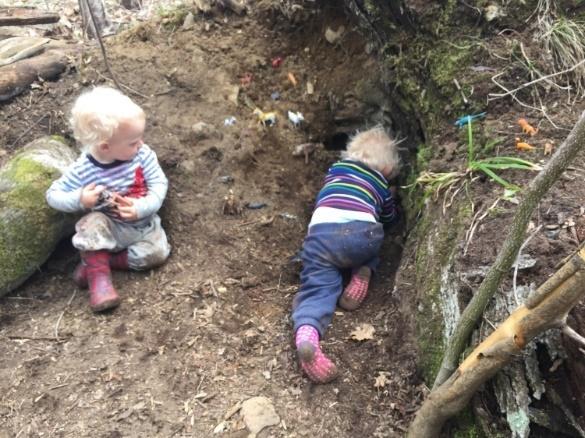
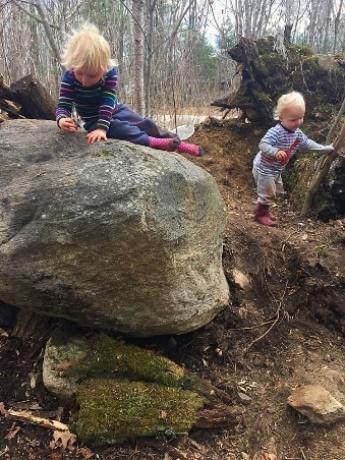
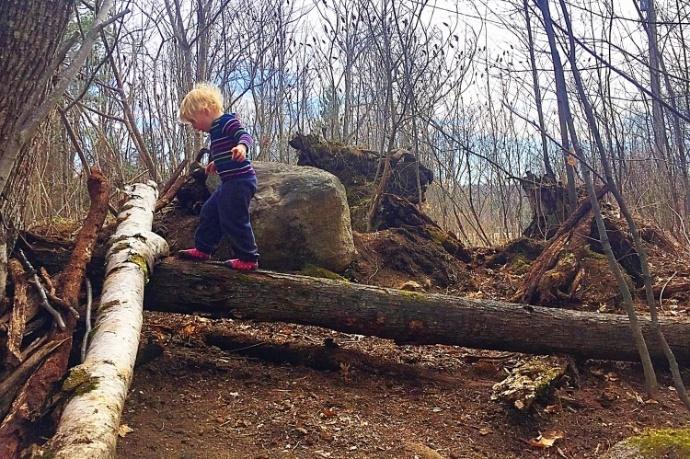
4. (After watching your little experts in the area) fix, change or add, where needed.
You don’t want to eliminate all challenges, but there’s nothing wrong with adding a few things here and there to help the kids to enjoy the space. For example, I added a step stone when I noticed my littlest explorer struggling to climb up in to the ‘entrance’.
5. Define the space.
Logs, branches and rocks work well as ‘walls’ and wood chips are excellent for ‘floors’. Old windows and mirrors are fun too once the glass is removed.
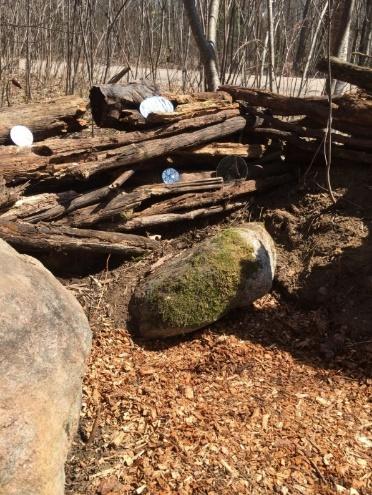
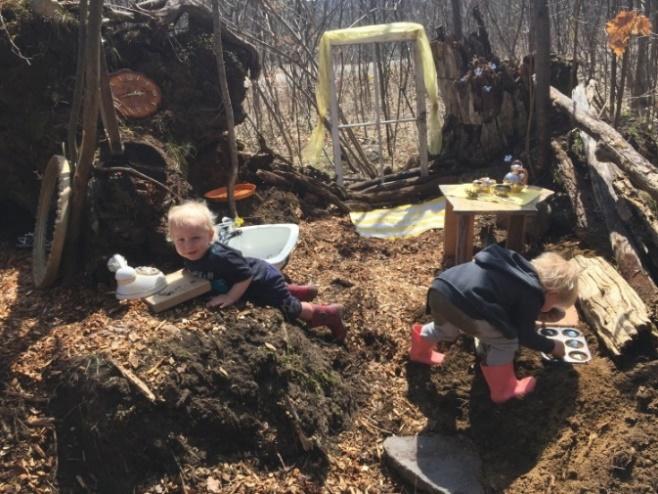
6. Add multi purpose open-ended materials.
Pots, pans and kitchen utensils are great. Bowls, cups, rocks, natural wood blocks, scoops etc.
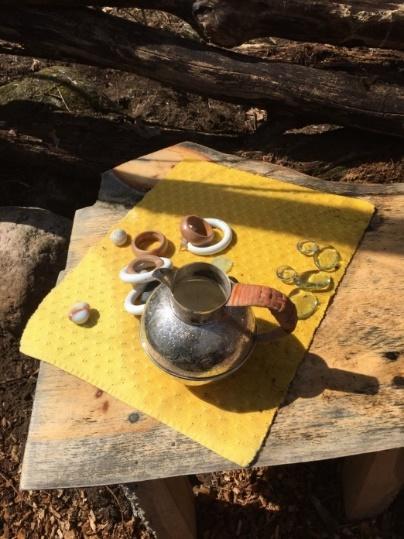
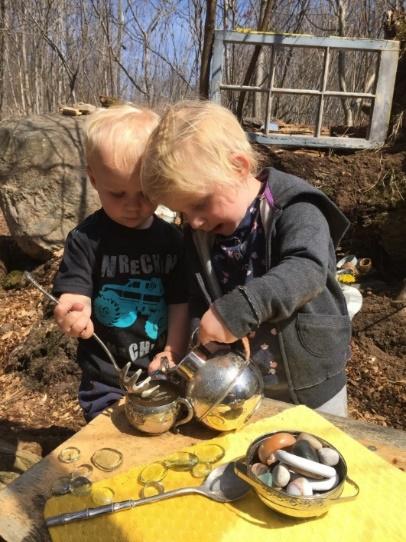
7. Make it creative and adventurous.
You are setting up an ‘invitation to play’ (as you would in the classroom if you’re an educator, Just on a larger scale and likely a little messier) A telephone, a clock, a small table and even a sink -makes the area feel like ‘home’. I also love to add items that sparkle and shine. Items that look like they aren’t typically meant for play. Special, interesting and unique – just like the little people who will be enjoying them.
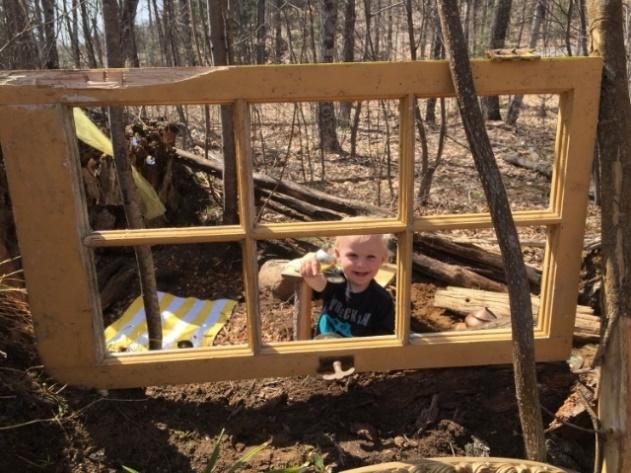
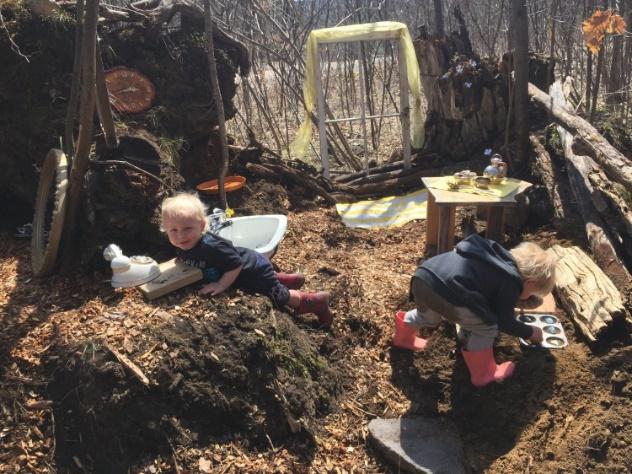
8. Keep the area safe for wildlife and your kids.
Watch for new hazards as the area changes through the seasons. Wasp nests, thorn bushes, broken branches etc.
9. Follow your child’s lead -discover their Interest.
If you created a space to be a ‘house’ and they have decided that it’s a ‘diner’ – go with it! Add a cash register, menus and a take-out window. Kids have the greatest ideas, and it will be fun to watch the area grow and evolve. It can be a nature science lab, wildlife hospital, home or cabin, school, gym, animal food factory, fire or ranger station, train, or automotive repair business, ecology/save the planet bureau and more.
Get your hands dirty. Eat the mud cakes! As a mother of 5 (ages 13-1) one thing that I know for sure is that time flies and there will be a point (*sniff sniff*) where they won’t ask you to sit and play anymore! Enjoy these moments!
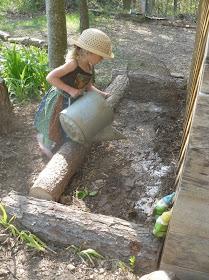
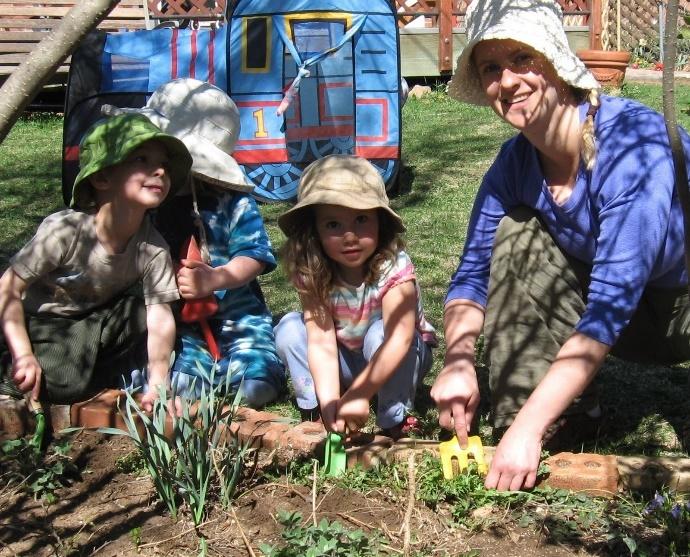
Designing a children's outdoor play space doesn't have to be complicated. In fact, I'm trying to make a real effort on the blog to include easier, natural activities.
Also, if you live in an urban environment with no backyard, a lot of these can be found/done at your local park or community garden! Here are ten things that can make a child's outdoor play space all that more special:
Kids need somewhere they can breathe, be alone and feel free. What makes a place secret? Make it their size, construct "walls" and have it in a slightly obscured location. Whether it's a clubhouse or just a sheet draped over some tree limbs, the main idea is to prompt them to create a world of their own. Boys like calling it a club or hide out.
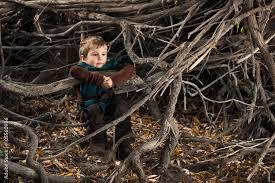
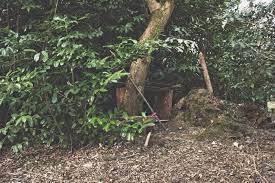
This is one of my favorite things ever. I would even wear olive and brown colors as camouflage. Our family’s rule was if it isn’t nailed down then we could use it. I liked cheese cloth dyed in mud. My mom kept my secret she would leave it under my pillow.
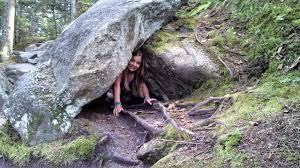
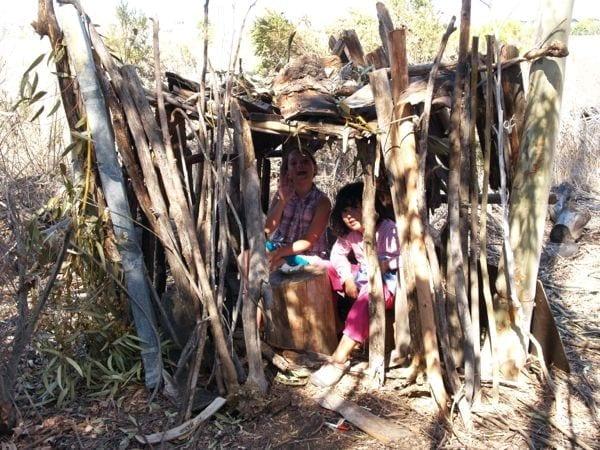
More Great Ideas:
The Five Minute Fort via My Crafty Spot
Make a Live Willow Den | We are buying our willow whips here
Giant Nest (ambitious, but had to include because it is amazing!)
Where there is water, there is fun. Enough said.
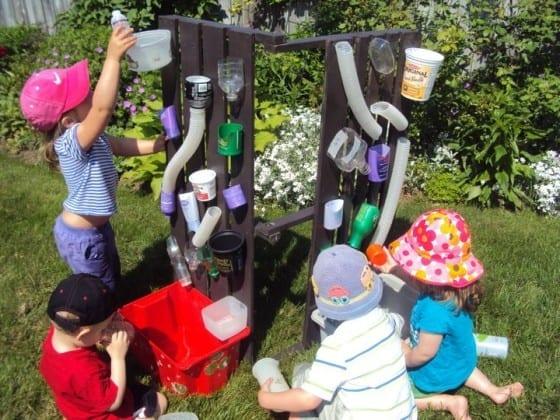
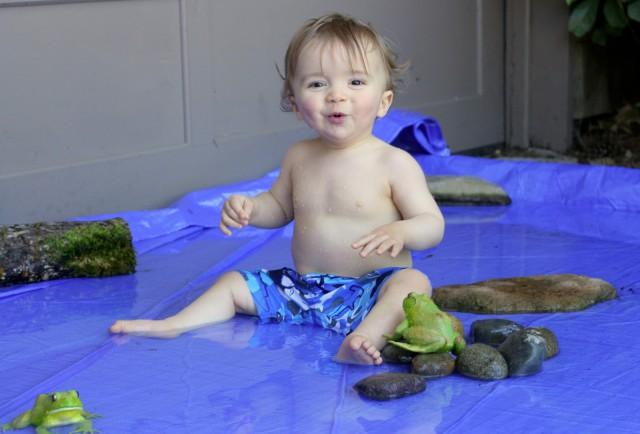
Homemade Water Wall via Happy Hooligans
More Great Ideas:
Nature Soup via Meri Cherry
10 DIY Sprinklers (I couldn't pick just one) via Fantastic Fun and Learning
How to Make a Giant Outdoor Water Bed via My Frugal Adventures
Easy Waterplayby the Picklebums
Whether it's mud pies or just digging for rocks, kids need to get dirty! I know that our mud kitchen was my daughter's favorite part of our outdoor play area this past summer. And if you really want to pair this activity down just give the kids some dirt and a bowl - trust me they will find their own wild materials.
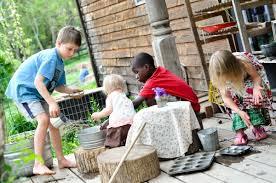
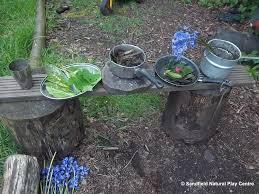
Designing an Outdoor Mud Pie Kitchen
More Muddy Ideas:
Make Mud Paint! via Learn Play Imagine
The Great Dinosaur Stomp via My Small Potatoes
30+ Ideas for Kids to Play in the Dirt via Hands On As We Grow
Mud Kitchen Essentials (this is a wonderful, comprehensive post) via abc does
As parents of all young children know, climbing is a natural instinct. Trees, stumps, rocks - they all present an opportunity for our kids to test their limits and go higher!
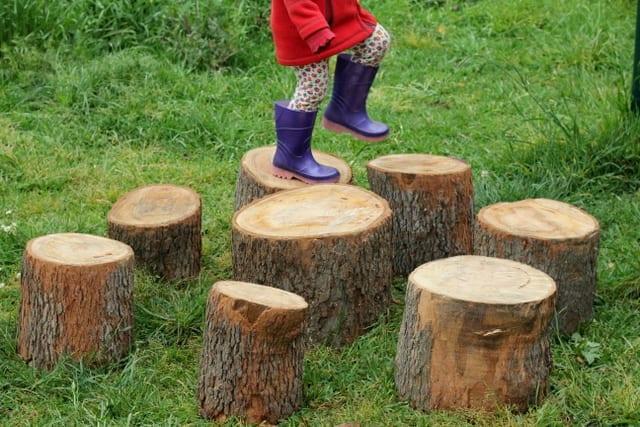
More Great Ideas:
Don't feel like installing, cutting or building anything? Have them go climb a tree!
Tire Climbing Tower via Blessings Overflowing
DIY Slackline via Pail and Pipe
Triple Wide Climbing Ladder (Buy it here)
For us, gardening is one of the fundamentals, and plays a unique role in our daughter's outdoor space! It may seem daunting, but there are some really easy ways to set up a growing area.
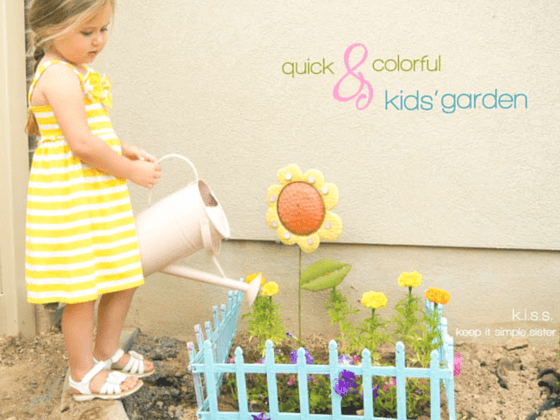
More Great Ideas:
Create a Sensory Garden via DIY gardening
You Grow Girl (My favorite resource for container gardening!)
Make a Fairy With Your Kids via See Jamie Blog
Designing a Sensory Garden via Gardening Know How
Make a Raised Bed in a Kiddie Pool via Southern Plate (with this one, I would put down a liner between the pool and the garden so the plastic chemicals don't leach into the food.
I always feel so much more creative when I'm outside. It is such a bonus to have an area where the kids can write, make art, music and even put on plays for each other. It doesn't matter if it is as simple as making mandalas on the ground with natural items, art and nature just go together!
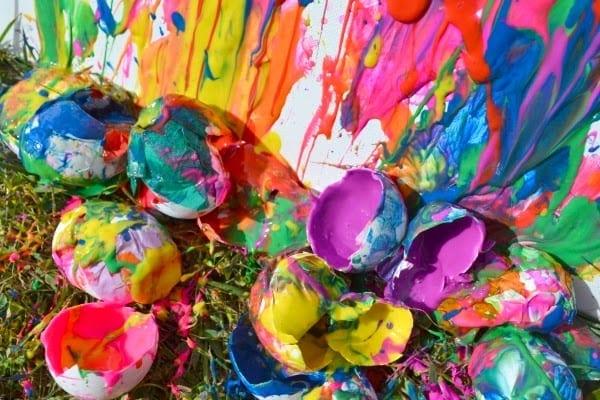
More Great Ideas:
20 Amazing Outdoor Music Stations via My Nearest and Dearest
Make an Outdoor Puppet Theater via Koko Designs
Giant Outdoor Weaving Station via Seasonal Gnome
Paint Filled Eggs on Canvas via Growing a Jeweled Rose
I'll never forgot the rope swing in my grandparents' yard. It was such a simple design, but whenever any of my siblings or cousins mention those years, that swing is always in the picture. Swinging is blissful and every child deserve a chance to feel the wind against their face as they propel themselves towards the sky.
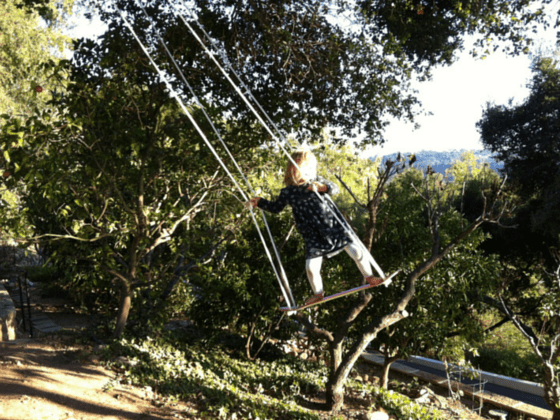
More Great Ideas:
7 Dollar DIY Rope Swing via Budget Blonde
Skateboard Swing via Little Bit Funky
Kid's Backyard Tire Swing via Popular Mechanics
Airplane Swing Tutorial via Whitney's Workshop
Spontaneous, unorganized play is the foundation of a child's time spent outside. In the spirit of the adventure playground movement, I like to have loose items and material available for my daughter to create with. They have no set "purpose" except for her to imagine, build and create with.
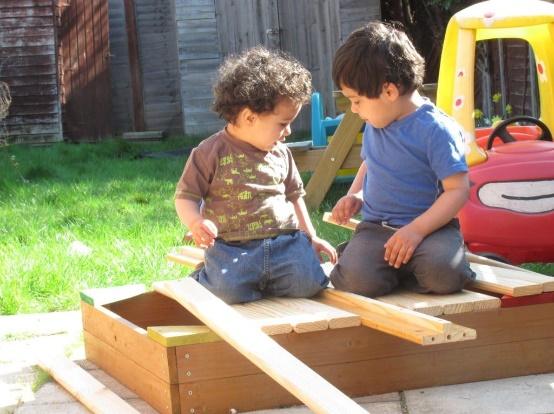
Loose Parts Play via In The Playroom
More Great Ideas:
Loose Parts Play via Inside Outside Indiana
Theory of Loose Parts via Let the Children Play
Handy Idea for Storing Loose Parts for Play via Let the Children Play
Homemade Tree Blocks via An Everyday Story
I've definitely been guilty of getting caught up in my own ideas and forgetting to ask my daughter what she really wants. Making sure our kids have a stake in the project can connect them to their space. Some things I'm trying to ask her are:
What's your favorite thing to do outside?
Do you like this here?
What color should we paint this?
Do you want to name your clubhouse?
Is there anything special you want to bring outside from your room?
Are we missing anything?
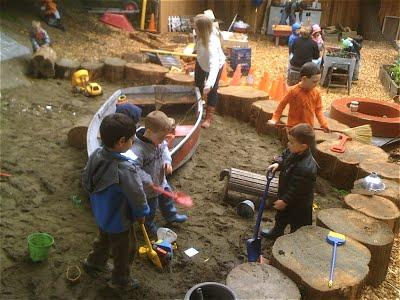
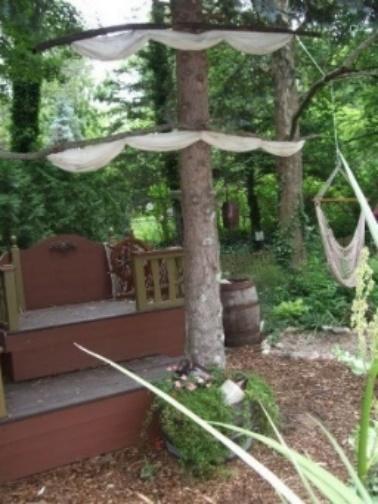
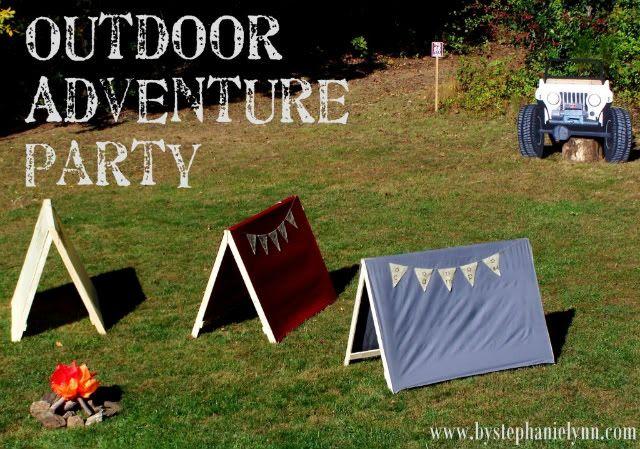
Kids love to pretend to cook and serve food, so why not take that idea to the next level with an outdoor eating area, complete with a table, stools and everything you need to have the perfect pretend (or real!) meal outside. Use the same space as a makerspace if you can.
Maker zone” in the natural playground
(Loose Parts Area)
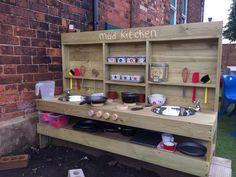
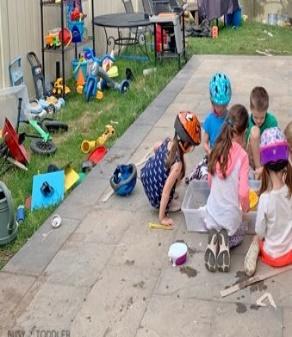
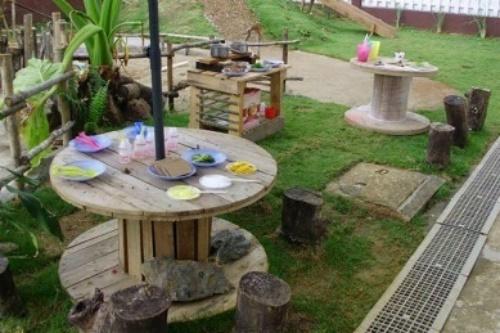
To help spur on your little builder, offer baskets, bins, crates or piles of twigs, pinecones, vines, bark, leaves, acorns- whatever you have on hand in your ecosystem. I’d suggest also placing a flat work surface nearby, either on the ground or elevated slightly to function as a table. Be prepared for lots of creations given as “gifts” throughout the day!
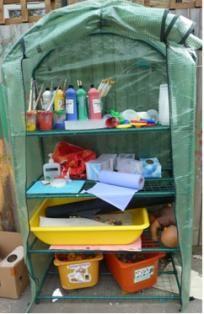
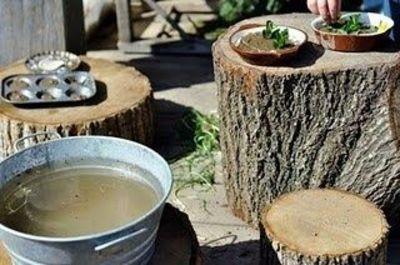
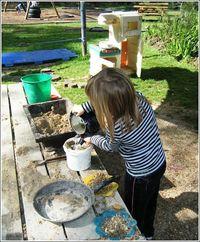
A mud kitchen is another great addition to your natural backyard playground. Outfit a child-sized work space with bamboo cutting boards, ladles, little wooden bowls and utensils, etc. If the weather turns cold, your mud kitchen can easily be converted into a snow kitchen. (And if you want other ideas for winter activities, I’ve got you covered!)
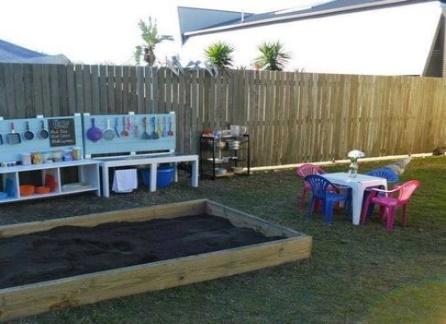
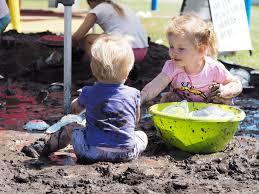
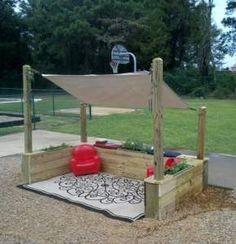
Just like Roo from the Hundred Acre Wood, little children need access to a sandy (or just plain dirt-y) pit for digging. I’m not just talking about your typical sand box. While those are great for small projects, I’m talking “rip up the sod and dig to China” levels of digging. Give your kid a variety of tools so they can switch up their digging with raking, hoeing, or weeding, too. My favorite sandboxes are created a theme and have a play tent or sun shelter.
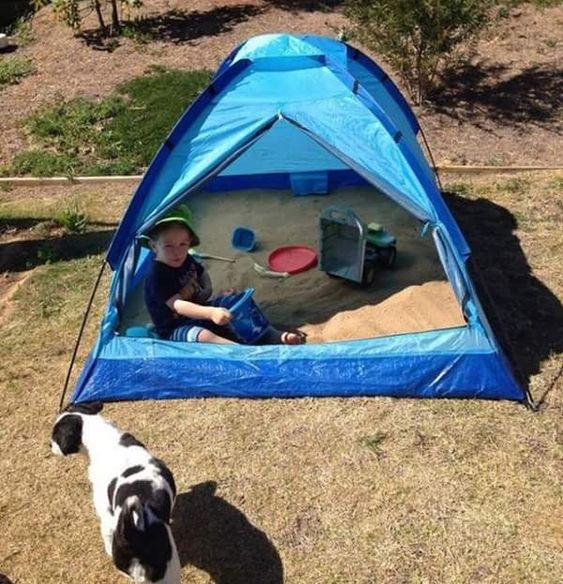
Trust me, you don't want to leave this one out! It's wonderful to interact with our children, but the truth is sometimes they just need to get lost in the moment without us. This past summer we installed two hammocks and it instantly transformed the children's play area into a mixed-use space that we all love to be in. Remember it’s cooler in the wooded area because its shaded. The more comfortable you are, the longer they can play in that oxygen rich environment that is so good for their health.
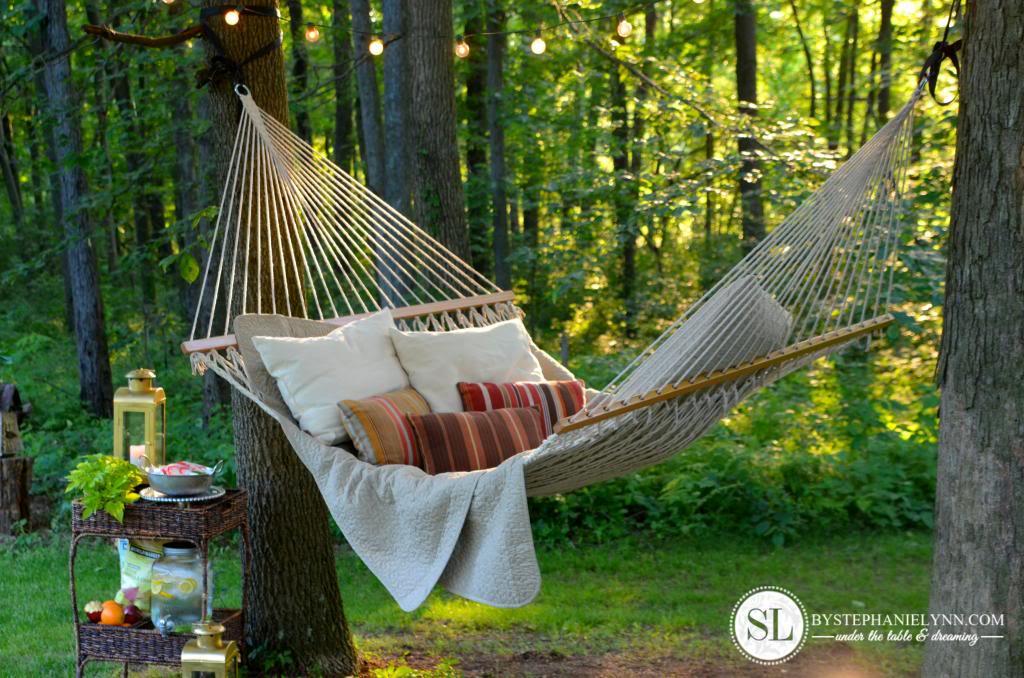
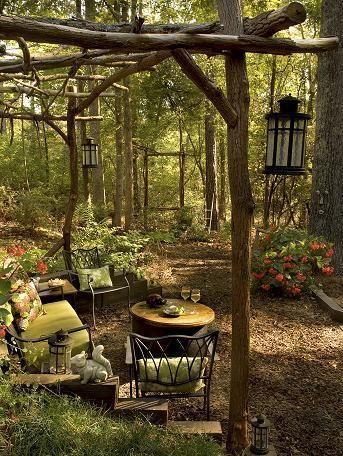
Creating a fun and exciting outdoor playspace for your child for free or just a few dollars! You don’t need expensive toys and fancy equipment to have an outdoor play area that will thrill your kids.
These inexpensive ideas for a backyard play space will make your yard the funnest place in the neighborhood. the corner of the backyard draws the children in like a magnet. It’s the play area in our backyard that’s entirely dedicated to the daycare kids, and it’s where the most care-free and magical moments of our day take place.
The old-fashioned simplicity of our outdoor play area makes it an enchanting place for kids to play, explore and learn. There’s our repainted play-house, and sandbox tips, which are popular for sure, and there is a myriad of other inexpensive play features that entertain, challenge and engage the hooligans for hours every day, all year long. It’s these play features I’m going to tell you about today.
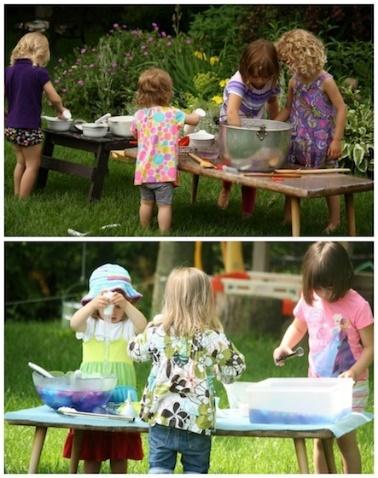
One of the best but least expensive investments I ever made for my daycare was this thrift shop coffee table. I got it for 6 dollars at a second-hand shop a couple of years ago, and we use it every day. In summer, it’s our backyard activity table, in winter it’s our art table in the craft room. Big enough for a crowd to gather around and water and paint spills don’t matter at all. See it in action here.
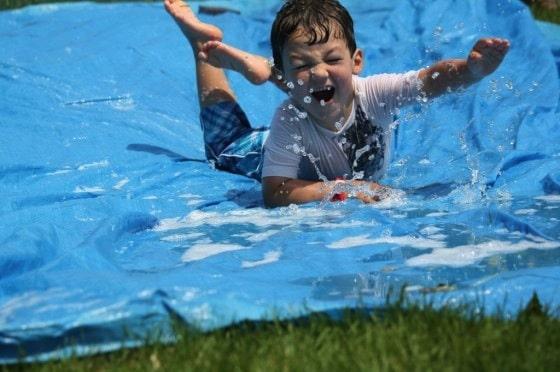
For the price of an inexpensive camping tarp, you can give your kids a whole day of wet, water, slippy-slidey fun! ! We’ve been doing this for years here in my daycare, and the kids never tire of it. See how to make your own waterside here.
Use a wheelbarrow to create a mobile mud patch for mud play in your backyard play space! It’s like a portable mud kitchen, and it will provide your kids with hours of good, old-fashioned muddy play! It’s a wonderful way to provide a temporary mud patch or mud kitchen in your backyard at home or preschool without having to dig up a patch of your lawn.
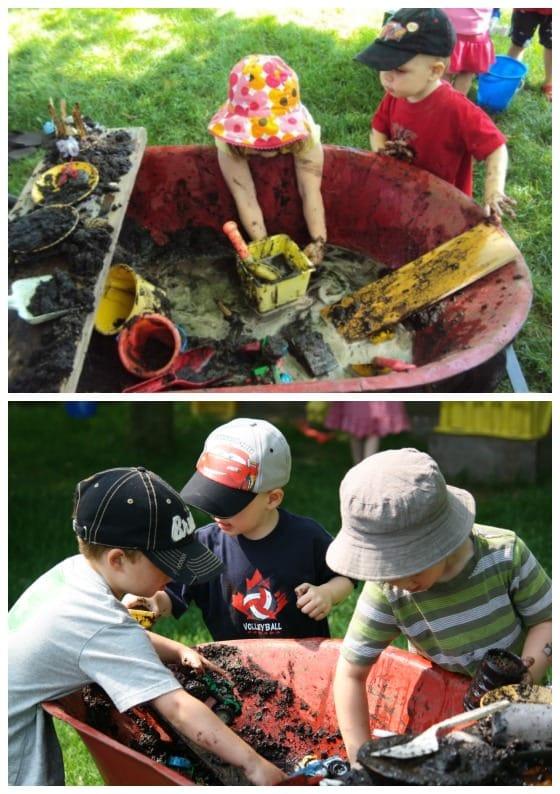
My daycare kids love to play in the mud, so we’ve come up with tons of creative mud play activities over the years. Many, we’ve done for International Mud Day which is June 29th every year.
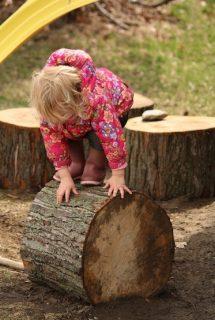
They provide children with a natural place to climb and jump, and they help to develop gross motor functions. Balance, coordination and decision-making skills all come into play when a child decides to take a step from one log to the next, and without knowing it, they take depth, distance, risk and their own abilities into consideration every time they climb up or jump down from one of the logs.
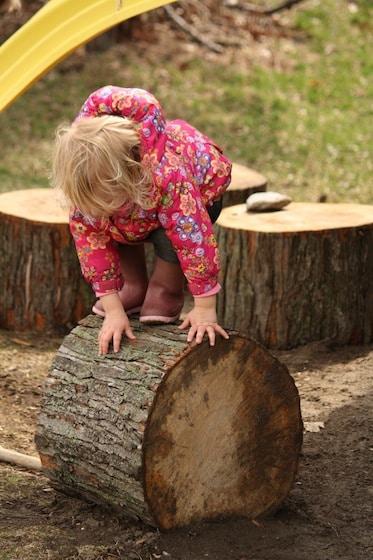
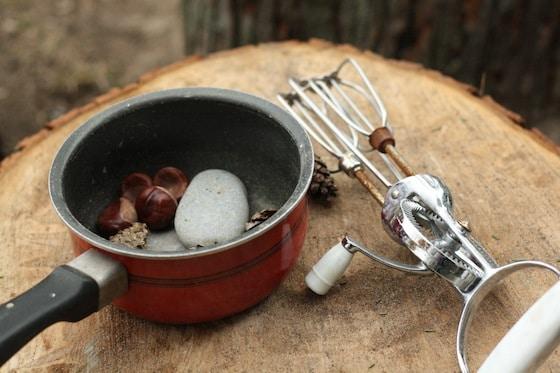
A log can also provide a place for a child to exercise his or her imagination and creativity: One moment it’s a stage on which to perform, and the next, it’s an instrument for making music. Ours are most often used as an extension to our play kitchen, and as tabletops for sorting “tools” and treasures on.
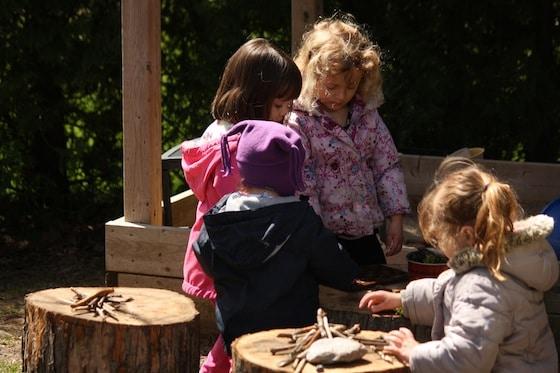
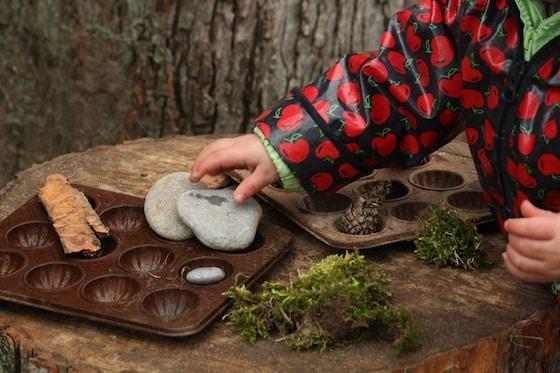
I can say without a doubt that our play logs have been one of the best backyard additions yet.
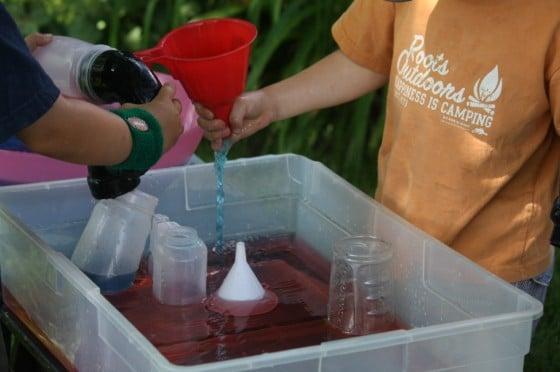
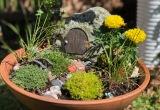
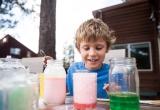
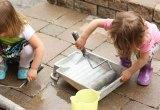
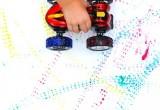
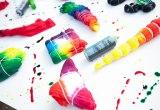

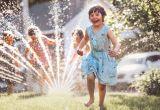
Using a location in your backyard that’s near a sidewalk or concrete, adding sand can turn an area of your yard into the ultimate sandbox. Add boards, sand tools and toy construction equipment and keep your little ones entertained for hours.
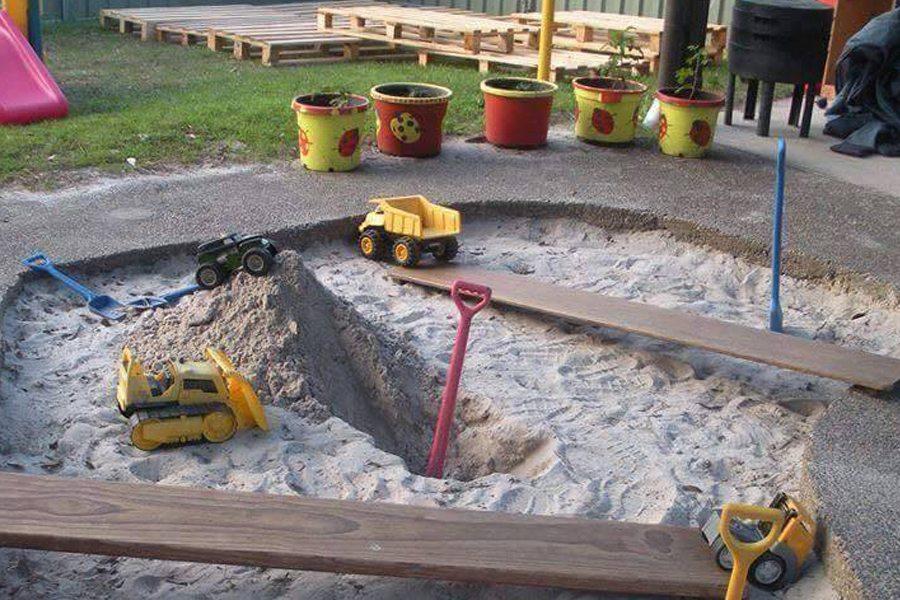
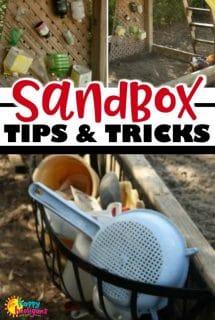
This little racetrack costs almost nothing and is sure to pay off within hours of being set up. Using inexpensive square and rectangular pavers, some sidewalk chalk and those matchbox cars you’re always stepping on inside, you can create the perfect little outdoor track.
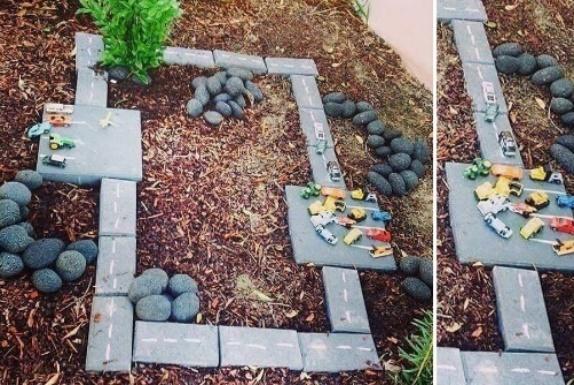
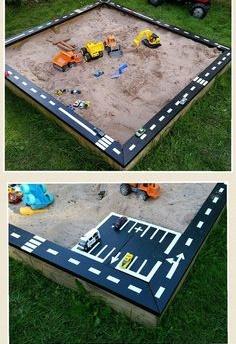
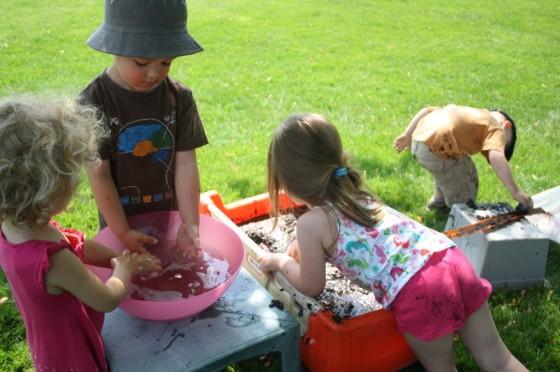
The whole neighborhood is going to want to hang out at your house when you do this!
Using inexpensive materials such as scrap lumber, wood and rocks, there are endless possibilities when it comes to creating a quaint little town within your backyard garden.
These activities are full of fun and adventure! A they can easily be added to your outdoor space to freshen or spice things up. However, they make excellent activities on their own
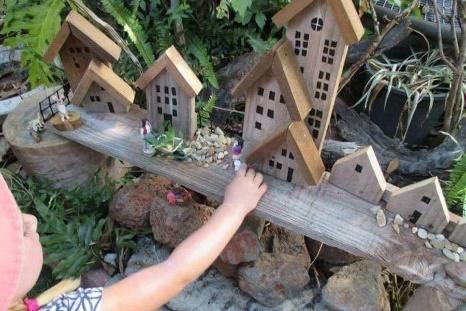
Having an extraordinary outdoor play space
doesn’t have to cost a fortune.
You can find several tire play structures in the "Design Library" on the Playground Ideas Website
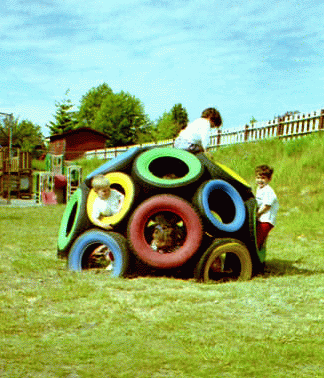
The PlayDome Page
I love this colorful tire Play Structure from The PlayDome Page
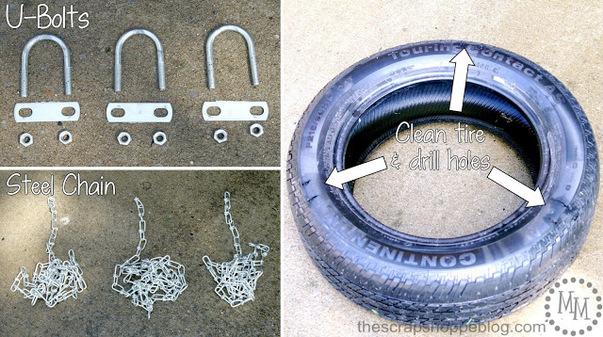
Today's Creative Life
Make a tire swing with this tutorial from Today's Creative life.
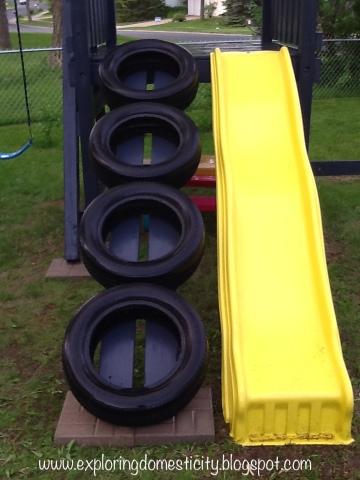
Exploring Domesticity
Use Tires as a Ladder. Check out this Tutorial by Exploring Domesticity
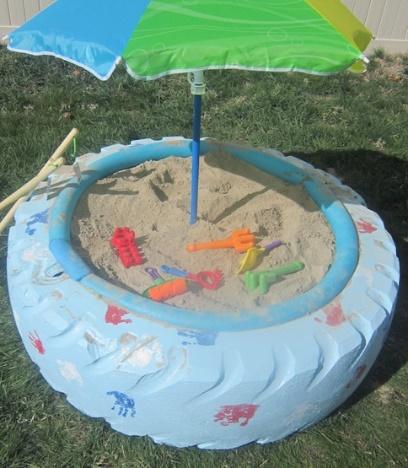
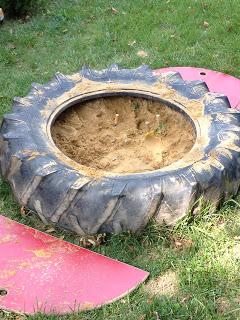
Make your own Tire Sandbox with this tutorial from I Heart Naptime
Some tips from recreational experts
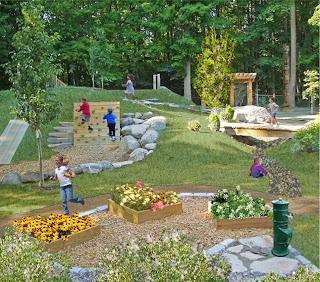
Natural playgrounds use natural elements to create safe, accessible, age-appropriate play, social, and learning opportunities. Cozy family play spaces in their own woodlands can be set up according to their personal interests and challenging their physical strength and agility as well as their imagination and creativity in new ways as they grow. Examples of elements for a community park might include
hills which integrate climbing aspects and slides,
shrubs for play forts or labyrinths,
sand areas,
open space for group or athletic play,
picnic shelters that double as art and science space
butterfly or rain gardens, and
fairy villages made from willow branches.
Natural playgrounds provide unique advantages. They appeal to the adventurous and the curious child.
Educational: Research shows that the natural environment fosters more creative play.
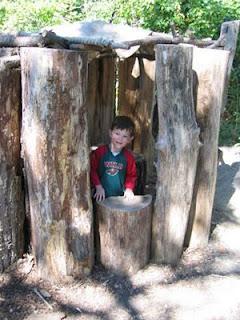
A widened age of interest in play: More of the park is considered play space, but it appeals to all ages. (Many of the standard pieces of equipment are skill based and therefore limited to narrow age groups.)
Environmental: The materials are natural, often from local sources or native plants, while plastic play structures are environmentally costly to manufacture, ship, and dispose of.
Jobs: Construction of natural playgrounds utilizes primarily local landscapers rather than remote manufactures.
Budget: More unique play elements can be constructed per dollar
and so forth
Common concerns voiced are accessibility, safety, and maintenance. However,
They can be built to ADA standards and using the natural landscaped appeal in some elements may exceed standards. For example, a slide embedded in a hill would be easier for kids to access than one that was reached by a ladder.
Most of the safety problems with natural playgrounds are from the high elements. Kids may scrape their knees while climbing boulders, but they could do the same on a sidewalk.
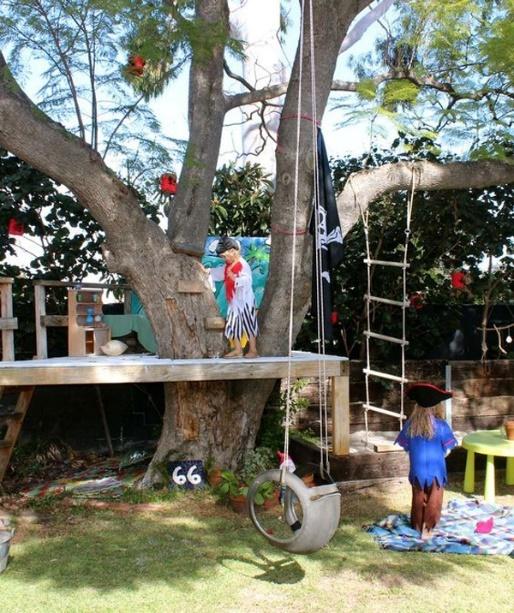
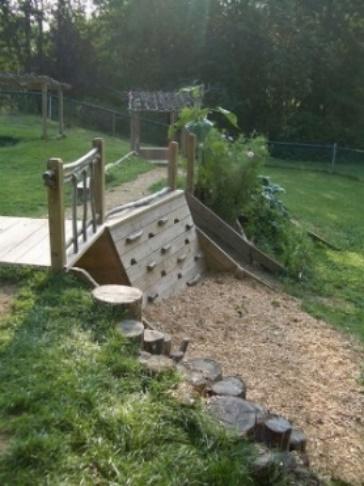
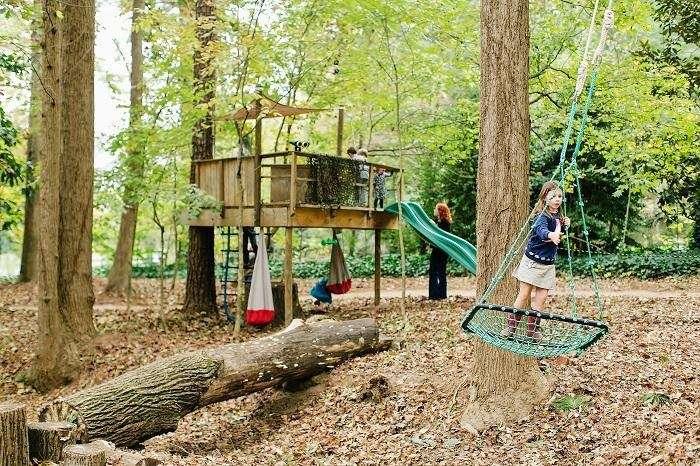
Information that I have found has indicated that they are less costly to maintain, but comparisons are hard, since they include general park maintenance rather than just checking bolts.
They are different from what we are used to. In this high-tech era, we expect “clean” playgrounds. Nature is unknown and sometimes scary. Kids would get dirty. But I think that is a good thing. But they can
I believe that making their natural space unique capitalizes on current research in playspaces that provide exceptional opportunities to challenge their kids love for testing out their ability to conquer their fears, and climbing structures are the perfect place to challenge themselves to reach new heights. Being able to climb higher than they did the last time they visited the park gives kids a sense of accomplishment.
There is an over-used cliche about thinking outside the box. Here, let's not think inside the box or outside; let's think about kids and creative play and rather than a new plastic toy, let's give the kids what they really want, what will stimulate their creativity: the cardboard box.
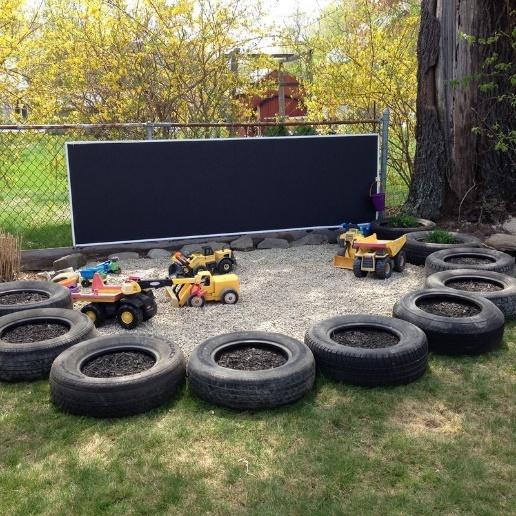
Fill the tires with dirt or sand for added construction fun.
This fabulous sandbox from Smiling Mama's Blog has a great DIY cover.
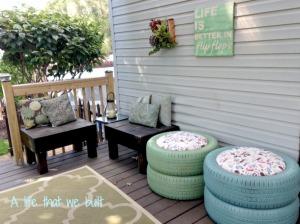
A Life We Built
Aren't these tire seats from A life we built just so adorable?
If you are going to hang out with the little ones, then you need a comfy place to call your own.

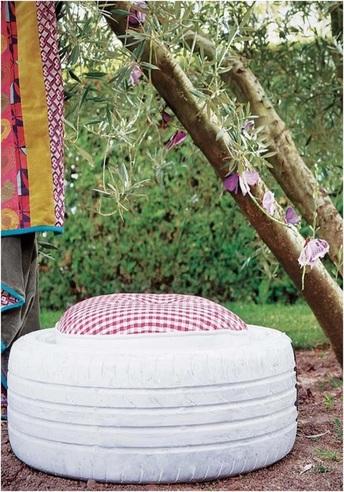
Flaming Petal DIY Enthusiasts
These lawn seats from flaming petal are so fun!
A easy Tire seat tutorial from DIY Enthusiasts
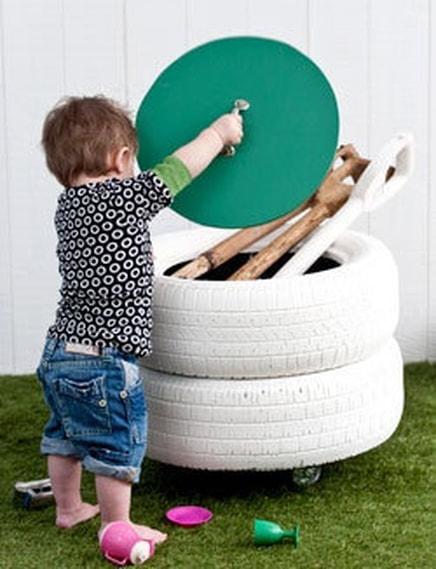
Babble
This idea from Curbly would be a great option for outdoor storage
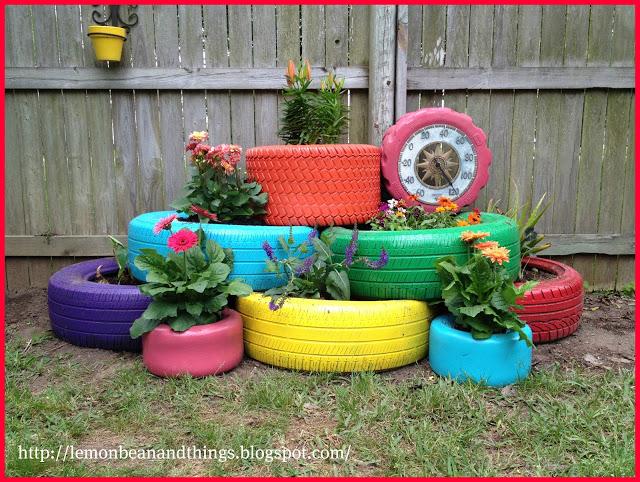
Lemon, Bean and Things
I love this colorful tire garden from Lemon, Bean and Things
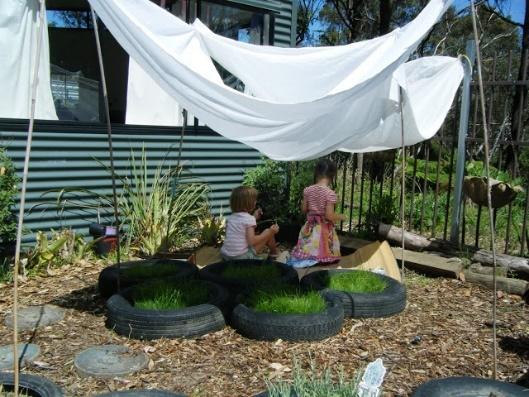
Let the Children Play
What a fun space from Let the Children Play.
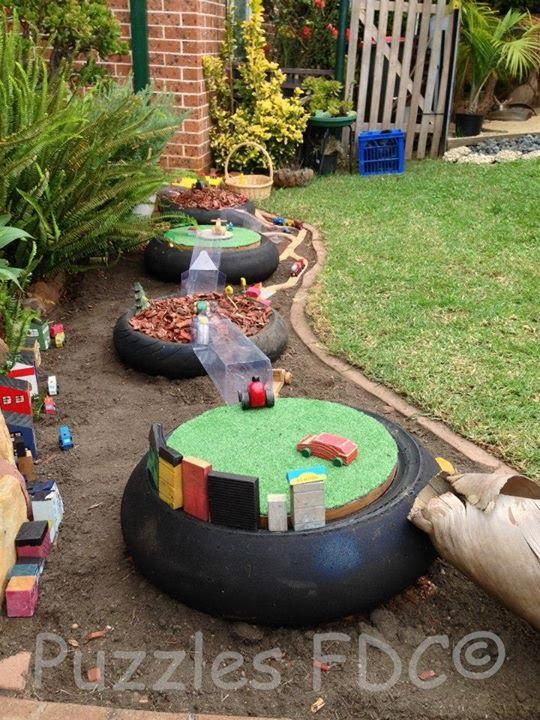
You can transform tires into an outdoor space for small world play with
this idea from Puzzles Family Daycare
Play Based Learning
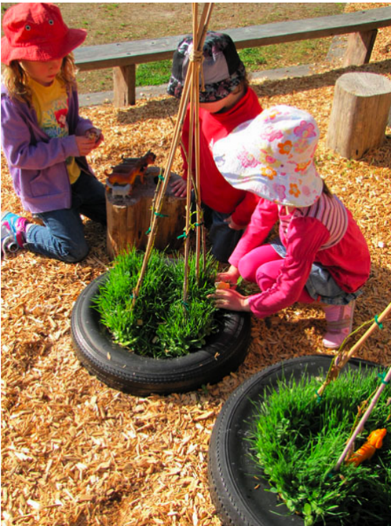
Here is another fun space for small world play from Play Based Learning
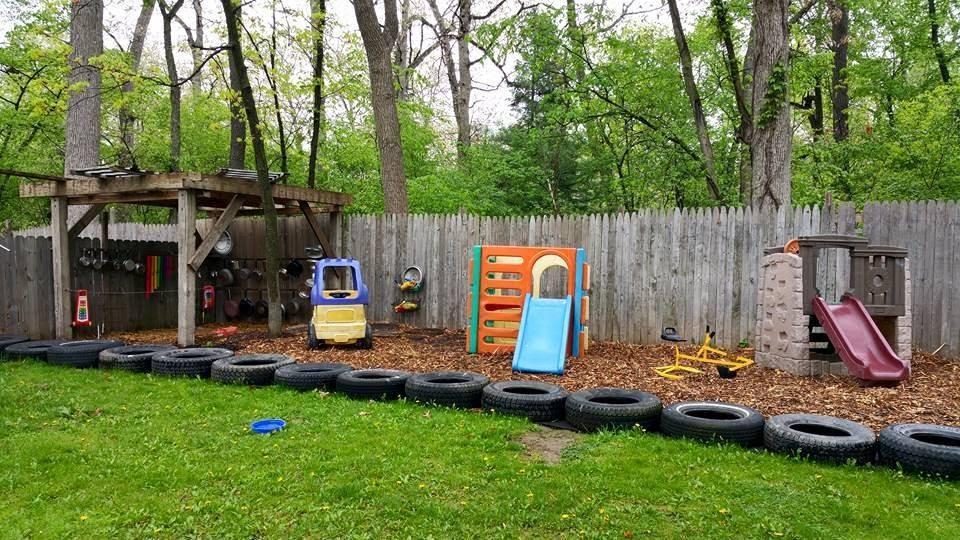
Use tires to border your play area.
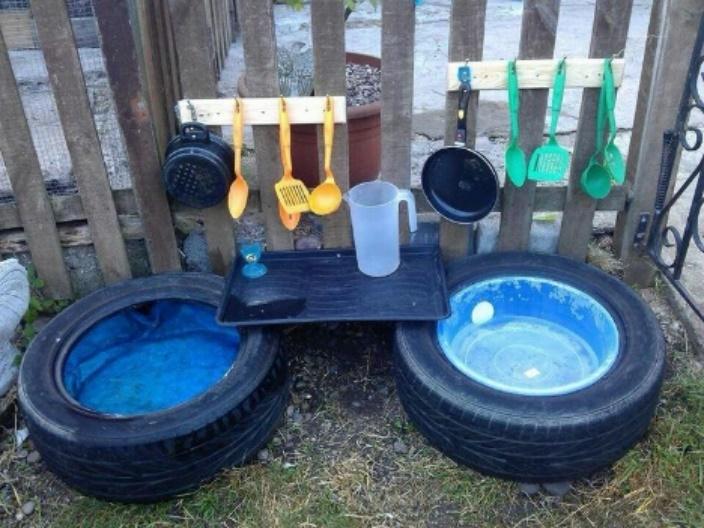
This fabulous tire Mud Kitchen can be found on 1001 Gardens
Add more detail about this feature, such as benefits or value
Add more detail about this feature, such as benefits or value
Add more detail about this feature, such as benefits or value
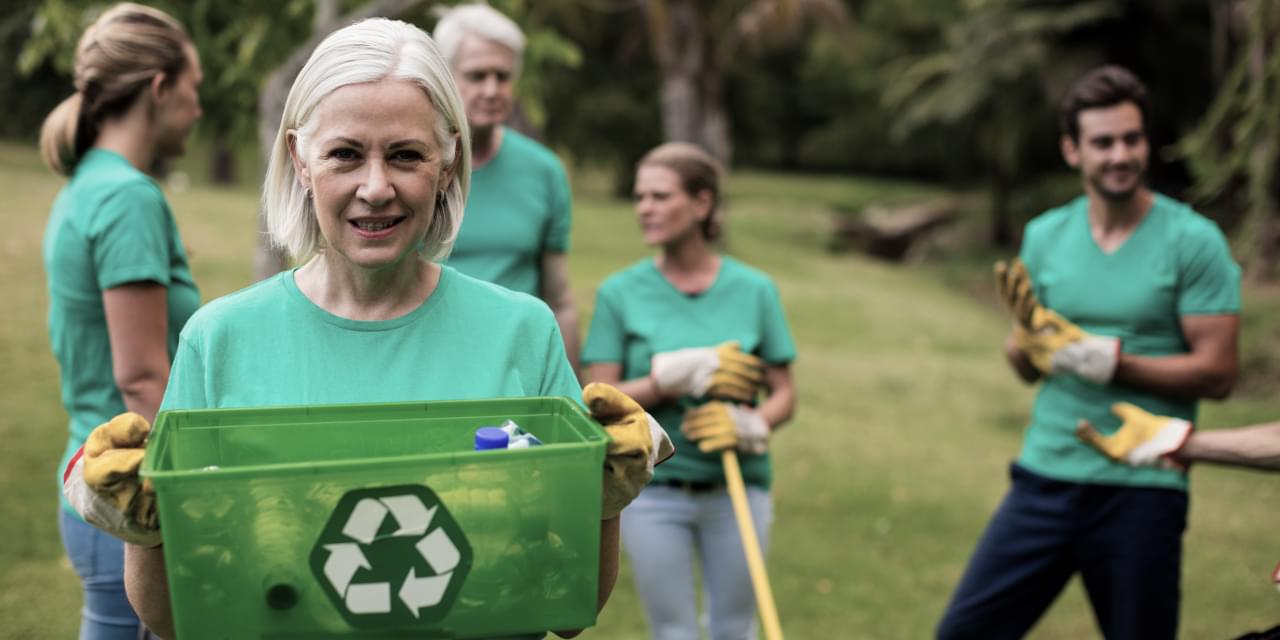
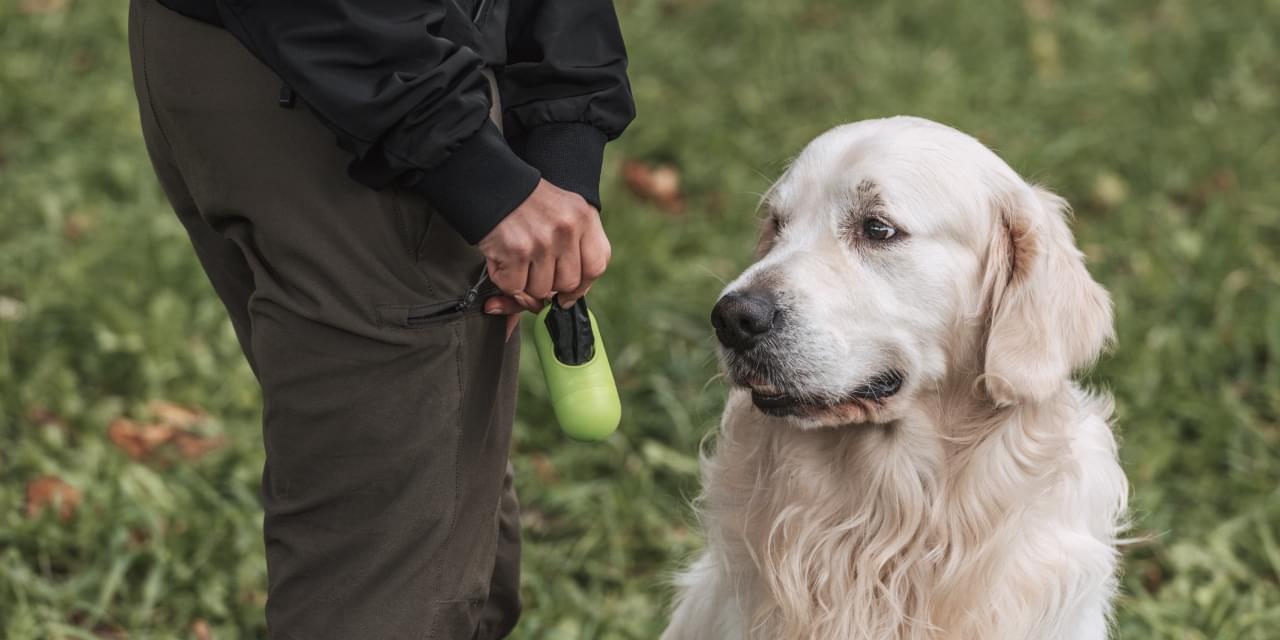
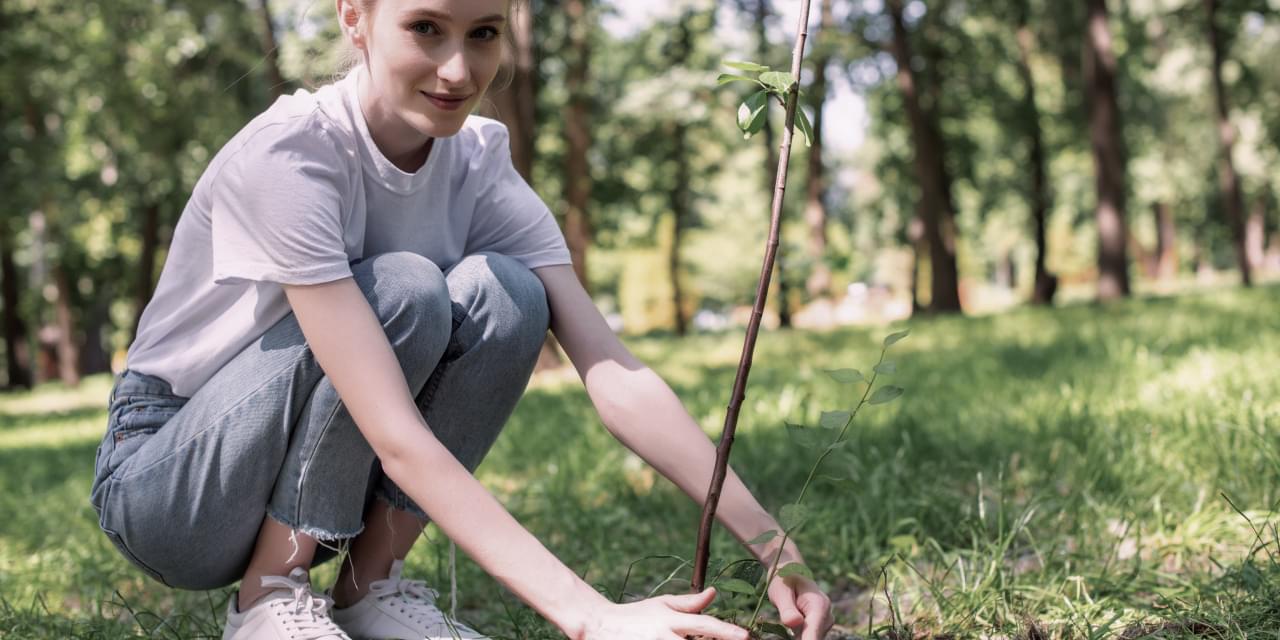
Posted on
April 15, 2011
by wowkits
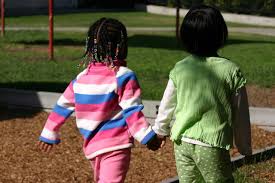
Toddlers are very content to sit next to another child and play, each doing their own thing, basically ignoring one another. But as children grow and develop, this “parallel play” transforms into a need for social interaction. By the time children reach the age of 4 or 5, the need for friendships and playing with peers becomes very important to children. But for many children, wanting to play with friends does not mean that they know how to make it happen. When the desire is there, but the skills are not, children get frustrated. They may become aggressive as they try to get other children to interact with them. Or you may notice children becoming reclusive as they try to avoid the frustrating situation.
As a parent or caregiver, you can help. Successful play experiences, and eventually friendships, require important social skills like empathy, problem solving, and communicating. Children who have difficulties in any of these areas may have a harder time making friends. Here are some strategies to support a child’s social development and encourage friendships:
Bring your child along as you go out in the world and interact with others. Children learn by watching and seeing you successfully interact with people you don’t know very well can help your child to learn some of these skills.
Give your child many opportunities to meet and interact with peers. Whether through play dates, group activities like story time, music classes, etc. or frequent visits to a local playground, the more your child is able to meet and interact with peers, the more opportunities he will have to develop and practice emerging social skills.
Pay attention to your child as she navigates play opportunities. Watch her verbal and non-verbal interactions. How does she approach peers? Does he play cooperatively? Is he able to communicate with playmates? Is there a pattern to when and how problems arise? Once you have a better idea of where or why your child is having troubles playing with others, you can better support him in developing new skills.
Model the behaviors that you would like to see in your child. Listen to his thoughts, feelings, ideas and stories. Be kind to others, greet them, give compliments, show empathy. Avoid complaining. Have a sense of humor about your own weaknesses.
Help your child to see her strengths and feel good about herself.
When arranging play dates, start small. Begin with one friend for one hour and then gradually increase the length of time and number of friends as your child’s skills grow. This will help to avoid frustrating or overstimulating your child.
Don’t be afraid to guide your child through activities as he learns about social and behavior expectations. You don’t need to be a “helicopter parent” but instead support your child as needed to encourage success.
Friendships are important to young children and learning how to start and maintain friendships is an important life skill. Like everything else, children are not born with these skills and some will need more guidance than others as they navigate the world of friendships.
Filed under: Family, Importance of Play, Preschool | Tagged: Child Development, Early Childhood, Family, Importance of Play, Natural Playground, parenting, Preschool | Leave a comment »
Posted on
October 15, 2010
by wowkits
It has now been a year since the professionally installed playground became open to the children at this child care center. It has changed very little since it was first installed. An outdoor water fountain was removed. One teacher told me it was a hazard, the way it stuck out in the middle of an area that got a lot of kid traffic. Another said it was removed because a pipe burst (New Hampshire winters do that to pipes!). Other small changes include, more rungs added to a steep wooden ramp heading up a small hill, and flat rocks embedded into a high-traffic section of another hill where the grass was quickly warn away.
The teachers and children are as enthusiastic about their natural playground today as they were a year ago. One preschool teacher described it as “a nice, peaceful place to be.” I have visited a lot of school playgrounds, and I haven’t heard many teachers describe the playground experience in that way! Here are some of the reasons these teachers love their playground:
Fewer child conflicts- it is easier to redirect children and children are more likely to walk away and find a space of their own in the varied terrain of this playground
More outdoor time- because it is so easy to link the curriculum to the playground (reenacting stories, science exploration, math activities with natural materials) teachers take the children outdoors more often. One teacher said, “we used to go for walks to find things in nature, now we don’t even have to leave the playground.”
Children use their imaginations more- the uneven, exciting terrain of the playground with its caves, hills, tunnels, dips, rocks, ridges, and trees encourage all kinds of imaginative and cooperative play with children.
While the teachers didn’t mention this, I can’t help but think that this playground has also enhanced their teaching. Research shows that when children can get out and experience math and science concepts, or act out stories, they are learning content in a variety of ways, learning it faster and learning it better.
More of the Natural Playground series:
Watching 2 Natural Playgrounds Part I
Watching 2 Natural Playgrounds Part II
Watching 2 Natural Playgrounds Part III
Filed under: Importance of Play, Multiple Intelligences, Preschool | Tagged: Child Care, Curriculum, Early Childhood, early literacy, Importance of Play, learning styles, Multiple Intelligences, Natural Playground, Preschool | Leave a comment »
Posted on
August 2, 2010
by wowkits
Anyone who has given a child a gift and has experienced the box being more interesting than the toy knows what fertile ground a child’s mind can be with the blank slate of a very plain object. A box can be a house, a bed, a hat, a parking garage… the possibilities are endless! This is the thinking behind the concept of “loose parts”. Loose parts are any loose, movable objects that children can use in many different ways during imaginative play.
Natural playground advocates see all of the sticks, rocks, sand, leaves and other natural items available on a natural playground as wonderful loose parts. And they are right! But can loose parts be made available in a traditional playground, which are often stripped of trees, rocks and any other items which might cause injury?
One playground designer I spoke with lamented the fact that most of the schools and town rec departments he deals with don’t want to have anything to do with any “playground equipment” that can’t be bolted down. Teachers don’t want to have to deal with lugging materials out and then storing them away again, and administrators don’t want to spend money on materials that they feel will quickly disappear. Understandable, but disappointing…
Now it looks like there is a new concept in playground equipment that is completely structured around the concept of loose parts.
Imagination Playground's Loose Parts
A recent article in the New Yorker Magazine entitle “The State of Play” turned me on to Imagination Playground and the work they are doing in bringing the concept of loose parts to playgrounds all over the country. These gigantic blue foam blocks and tubes can be used in any playground or open space, even in water! They are the keystone feature in many new playgrounds, but can also be purchased as a “kit” to add to your local playground. Loose parts that are very unlikely to walk away! Check out their website for more information about their mission and all kinds of photos and videos.
Filed under: Importance of Play, Multiple Intelligences, Preschool, School | Tagged: Early Childhood, Importance of Play, kindergarten, learning styles, Multiple Intelligences, Natural Playground, parenting, Preschool, School, sensory experiences | Leave a comment »
Posted on
May 11, 2010
by wowkits
A few weeks ago I had the opportunity to observe a group of toddlers using the professionally installed natural playground. Normally, watching a group of toddlers playing outdoors is like watching TV at a big box electronic store. Each TV is set to its own channel, doing its own thing. There may be three toddlers in the sandbox, but they are each digging, dumping or piling, as if they had no idea the others were there.
On the natural playground, it was a completely different story. Here I found one toddler encouraging another to crawl up the big hill. The encouragement became more physical and animated the closer the climbing child got to the top.
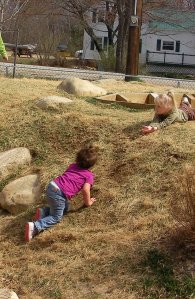
One toddler encourages another to climb to the top
Friends celebrate success!
Not only were children encouraging one another to try new things. They were exploring together too! A brief conversation with the toddler teachers made it clear that they too are finding outdoor time with their children to be much more enjoyable. Children are discovering positive ways to challenge themselves and practicing these new skills over and over again. As a result, there are fewer incidents of children intentionally hurting one another or quarreling over toys.
Exploring is even more fun with a friend!
To see previous entries on the natural playground series, click here:
Watching 2 Natural Playgrounds Part III
This is a FAQ description. Add more detail about this service, such as benefits, appearance, components and value
This is a FAQ description. Add more detail about this service, such as benefits, appearance, components and value
This is a FAQ description. Add more detail about this service, such as benefits, appearance, components and value